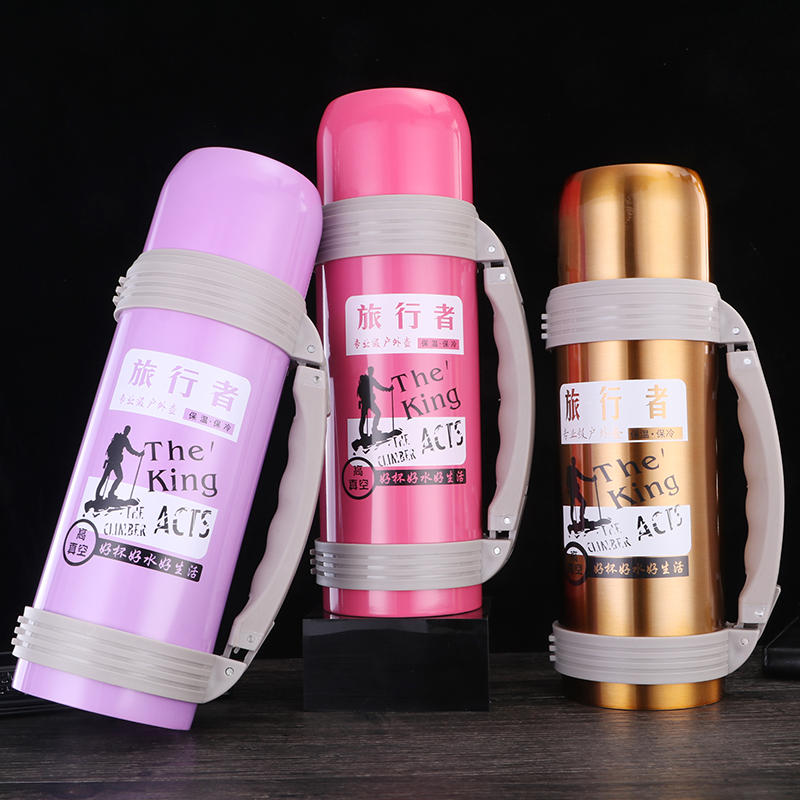The core component of the thermos bottle is the bladder. Manufacturing bottle bladders requires the following four steps: ① Bottle preform preparation. The glass material used in thermos bottles is commonly used soda-lime-silicate glass. Take high-temperature glass liquid that is uniform and free of impurities, and blow it into a glass inner preform and an outer preform with a wall thickness of 1 to 2 mm in a metal mold (see Glass Manufacturing). ② Make bile blank. The inner bottle is placed inside the outer bottle, the mouth of the bottle is sealed together, and a silver plate is provided at the bottom of the outer bottle.Thermos bottle parts
The conduit for air extraction operation, this glass structure is called bottle blank. There are three main methods for making glass bottle blanks: bottom sealing method, shoulder sealing method and waist sealing method. The bottom-drawing sealing method is to cut the inner preform and cut the bottom of the outer bottle. The inner bottle is inserted from the bottom of the outer bottle and fixed with an asbestos plug. Then the bottom of the outer bottle is rounded and sealed, and a small tail tube is connected. The mouth of the bottle is fused and sealed. The shrink-shoulder sealing method is to cut the inner bottle preform, cut the outer bottle preform, insert the inner bottle from the upper end of the outer bottle and fix it with an asbestos plug. The outer bottle is reduced in diameter to form a bottle shoulder and the two bottle mouths are fused and sealed, and a small tail tube is connected. . The waist joint sealing method is to cut the inner bottle preform, cut the outer bottle preform and cut the waist into two sections, put the inner bottle into the outer bottle, re-weld the waist, and connect the small tail tube. ③Silver plated. A certain amount of silver ammonia complex solution and aldehyde solution as a reducing agent are poured into the bottle blank sandwich through a small tail catheter to perform a silver mirror reaction, and the silver ions are reduced and deposited on the glass surface to form a thin mirror silver film. ④ Vacuum. The tail pipe of the silver-plated double-layer bottle blank is connected to the vacuum system and heated to 300-400°C, prompting the glass to release various adsorbed gases and residual moisture. At the same time, use a vacuum pump to evacuate the air. When the vacuum degree in the interlayer space of the bottle reaches 10-3~10-4mmHg, the tail pipe is melted and sealed.
Post time: Aug-12-2024
